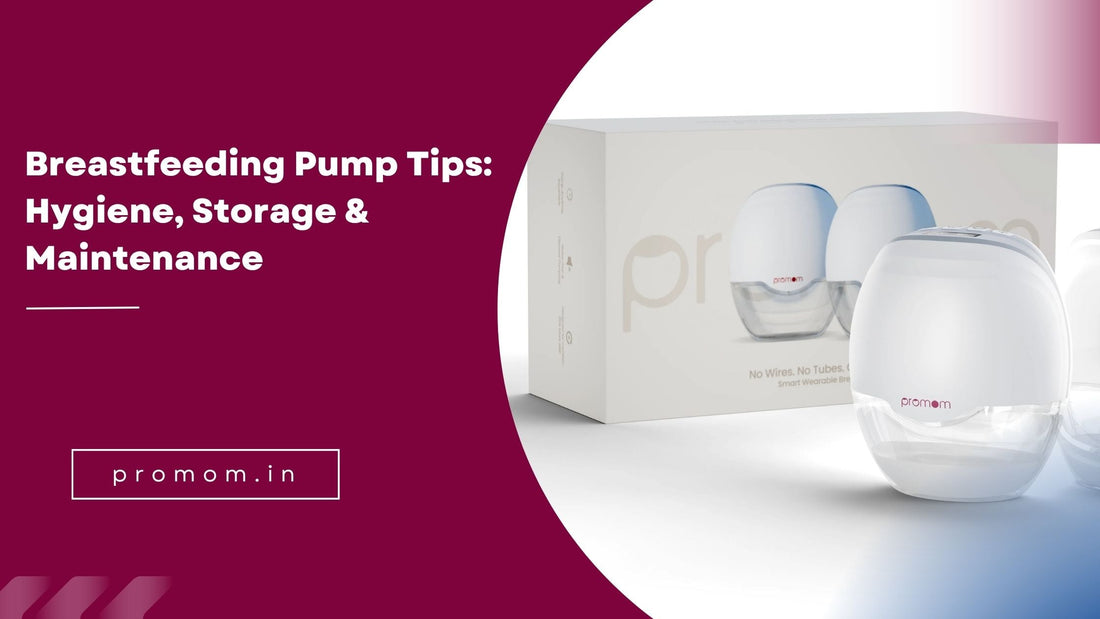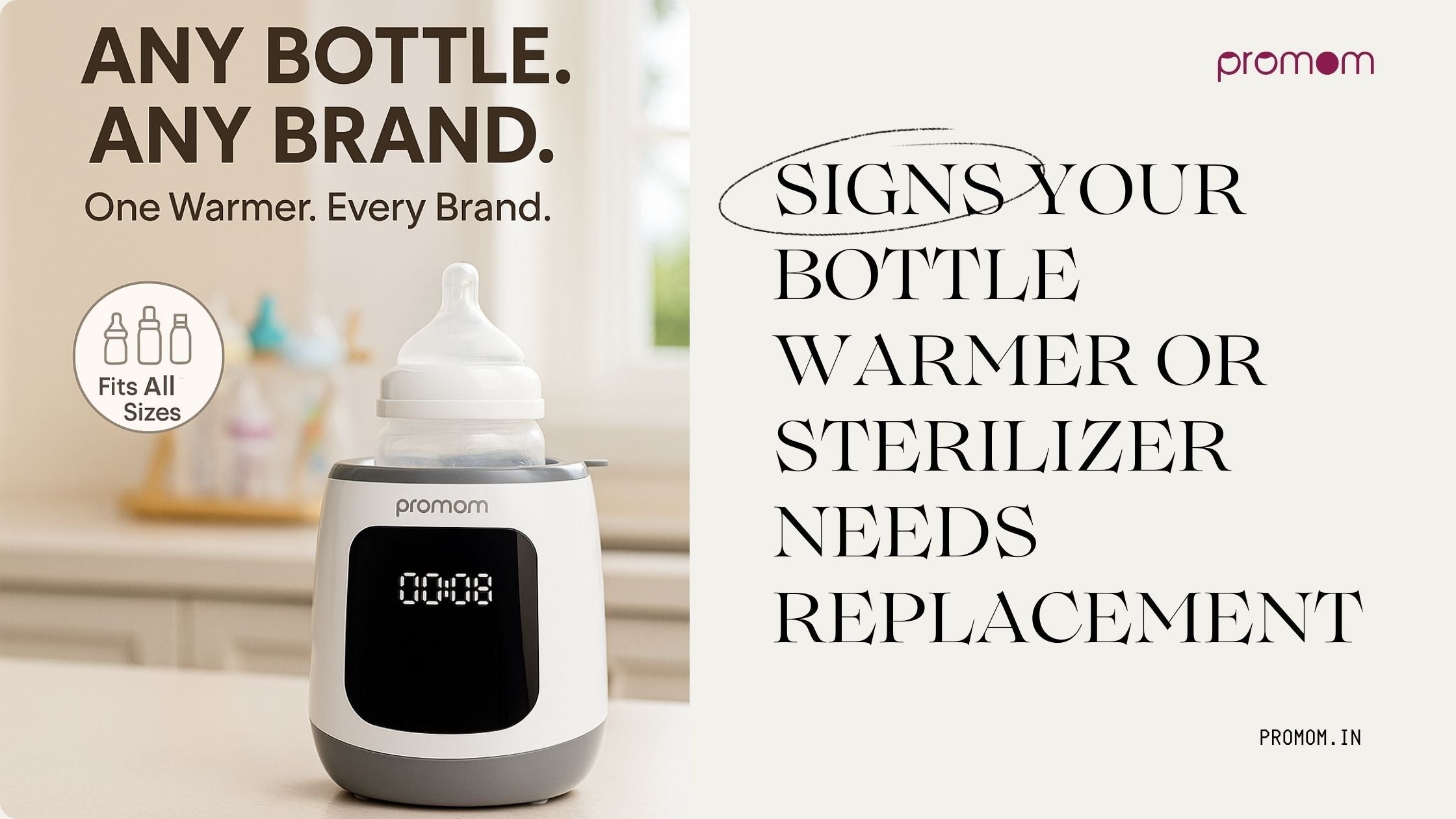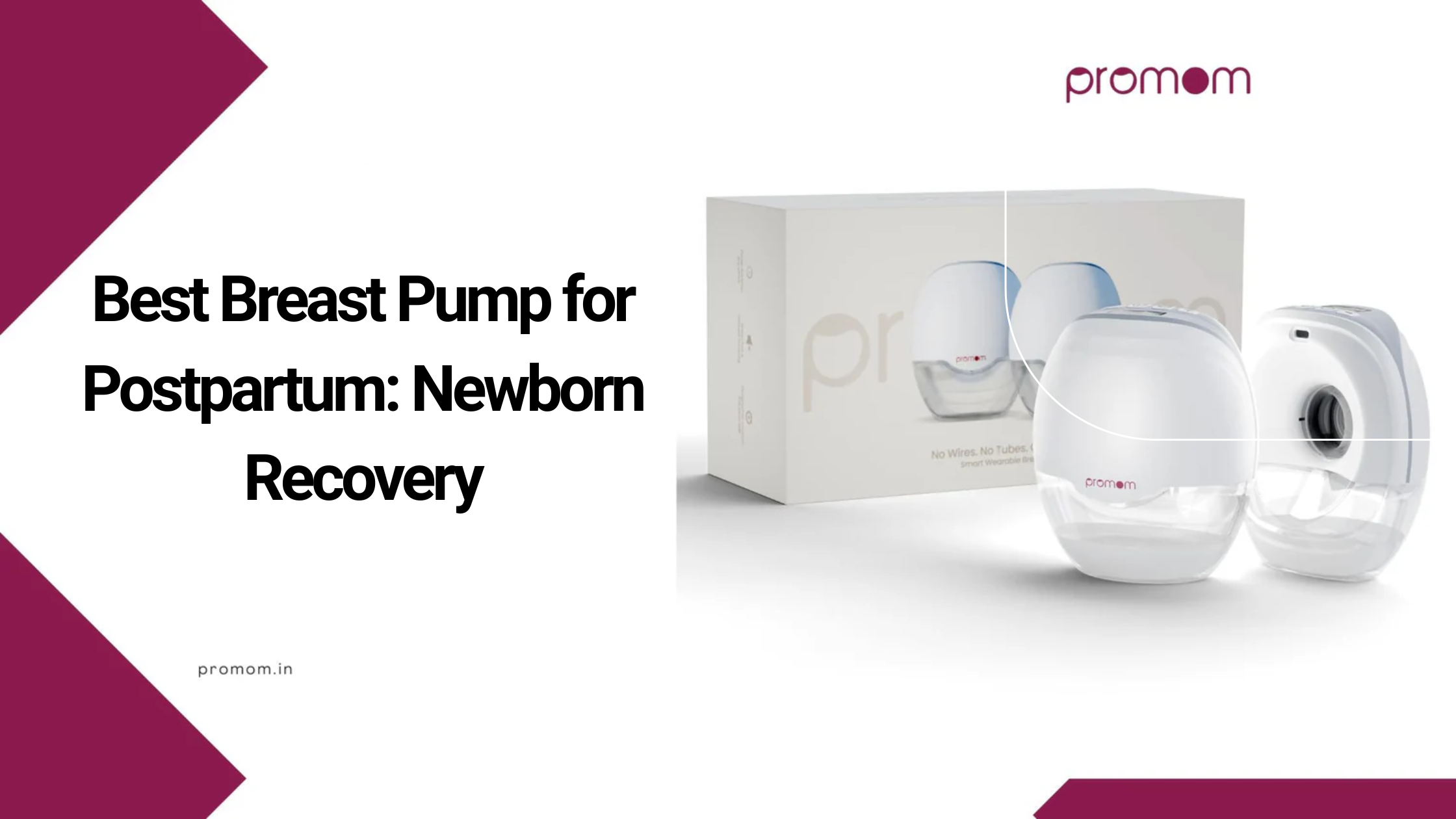
Breastfeeding Pump Tips: Hygiene, Storage & Maintenance
A breast-feeding pump turns out to be a significant element of the lives of numerous first-time mothers. As well as being important to take care of your pump, whether expressing milk in the workplace, providing more milk, or just having a break in feeding, it is essential to pay attention to hygienic and storage practices.
Proper maintenance and cleanliness do not only keep your baby healthy; they also extend the period of usage of your breastfeeding pump.
This blog will provide helpful ideas on ensuring hygiene, the safety of storing expressed milk, and managing your breastfeeding pump to facilitate a hassle-free feeding experience.
The Importance of Hygiene When Pumping Breastmilk
Your baby should have nothing but your breast milk, which can be easily contaminated by poorly maintaining the parts of the pump. Your little one can be infected or get stomach upsets due to bacteria or mold growth in the improperly cleaned equipment.
This is why proper hygiene during the utilization of a breastfeeding pump is not a matter of dealing with compromise.
Wash as soon as possible.
Wash all components of your breastfeeding pump that are exposed to milk after each pumping session by taking them apart, e.g., bottles, valves, membranes, and flanges. They must first be rinsed with cold water to get rid of the milk deposit, after which they may be washed thoroughly in warm soapy water.
Dry Thoroughly
Completely dry all the parts after cleaning them with a clean towel or drying rack. Do not run any part on a cloth towel because they accumulate bacteria. Before reassembling or storing, make them dry thoroughly in order to avoid the growth of molds.
Clean Using Proper Methods
-
Hand wash: Use mild detergent and a soft brush or sponge specially used in cleaning parts of the pump. Stay away from harsh chemicals or abrasive elements that may destroy your pump.
-
Dishwasher safe components: A few parts of the pump are dishwasher-safe; check in your product manual to make sure. Conduct delicate parts on the upper rack.
-
Regular sterilization: Sterilize parts of pumps daily by boiling them in water for 5 minutes or using a steam sterilizer, especially in the first few months or with premature babies.
Tips to maintain your breastfeeding pump
Adjusting your breast pump routinely keeps your pump in good shape to serve you more effectively and longer. The following have been observed to ensure that your pump is in good shape.
Check and Replace Components
Valves, membranes, and tubing are those pump parts that can wear and influence suction. Inspect pump parts regularly and refer to the manufacturer concerning replacement of ones that are torn, discolored, or cracked.
Make the Pump Motor Clean
You do not need to wash the motor or electrical elements, but you can wipe the outside part using a clean, dry cloth to clear the dust or the milk spill. Do not get water in the motor; otherwise, it will be damaged.
Store Your Pump Correctly
Always put the breastfeeding pump in a clean and dry storage place, ideally with a protective case or bag, when not in use. This prevents dust buildup and falling, such as accidental breakage.
Manufacturer Directions
You should read and consult the user manual pertaining to the brand of the breastfeeding pump you are using. Various pumps can bear different care instructions or substitutions.
Common Mistakes to Avoid When Using a Breastfeeding Pump
To make the most of your breastfeeding pump and avoid common pitfalls, here are a few mistakes to watch out for:
-
Skipping cleaning steps: Even if you’re tired, never skip cleaning your pump parts immediately after use.
-
Using harsh cleaners: Avoid bleach or antibacterial soaps not designed for baby products, as they can leave harmful residues.
-
Reusing storage bags: Always use new storage bags designed for breast milk; reuse can cause leaks or contamination.
-
Ignoring suction issues: If your pump’s suction feels weak, inspect parts and replace worn items immediately to maintain efficiency.
Final Thoughts
A lactation pump can be the saving grace for most mothers, offering convenience and stress-free freedom. To keep your baby safe and your pump working well, you need to practice good hygiene, store milk correctly, and maintain your pump regularly.
These are the breastfeeding pump tips on hygiene, storage, and maintenance you need to follow to enjoy your breastfeeding journey without any worries.
Wanting a tested breastfeeding pump and professional advice? Go to Promom and see the best breastfeeding pumps and accessories to keep you on board at all times. Feel free and embrace breastfeeding with Promom now!


